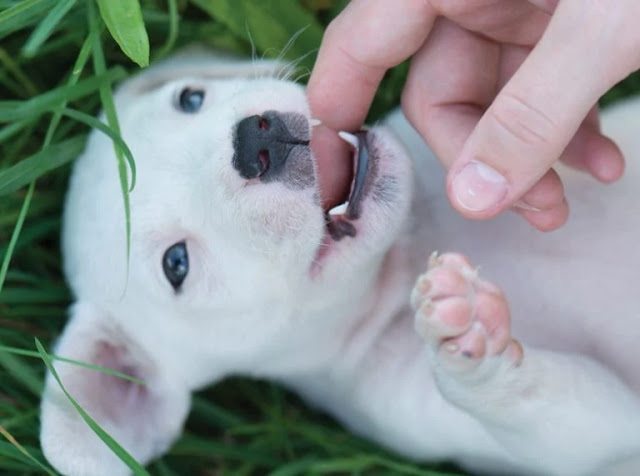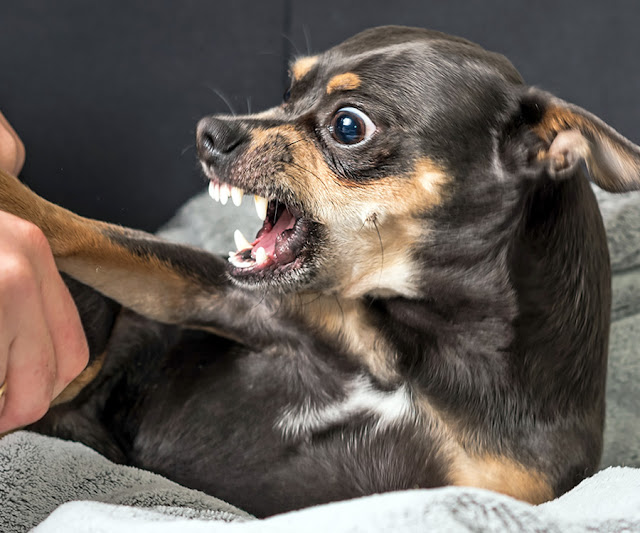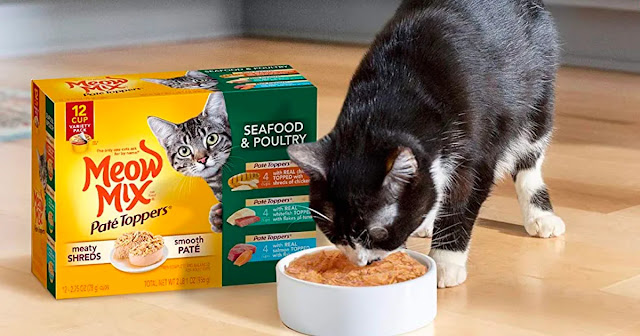how to teach a puppy not to bite
Puppy Education: Tips for Teaching Your New Best Friend Not to Bite
Bringing a sweet little puppy into your home is a joyous occasion. Those tiny paws, wet nose, and playful demeanor can instantly steal your heart. However, as any new puppy parent knows, along with all that cuteness comes biting. Puppies, especially during their teething stage, have a natural urge to bite and chew on everything in sight. This behavior may be normal, but it’s essential to teach your furry friend proper bite inhibition to prevent any accidents or future behavior problems.
Puppy Biting Solutions
It’s important to remember that biting is a natural behavior for puppies and it’s their way of exploring the world and engaging with their environment. However, allowing your puppy to bite without any boundaries can lead to problems later on. Here are some effective solutions to help train your puppy not to bite:
1. Start with Socialization
Socializing your puppy from an early age is key to preventing aggressive behavior and teaching bite inhibition. Expose your puppy to various environments, people, and other animals to help them learn how to interact appropriately. This exposure helps them develop bite inhibition as they understand what is acceptable behavior and what is not.
2. Use Positive Reinforcement
Puppies respond well to positive reinforcement, so reward good behavior and redirect bad behavior. When your puppy bites or nips at you, calmly say “no” and redirect their attention to a more appropriate chew toy or treat. When your puppy chooses the toy over your hand, praise them and offer plenty of affection.
3. Provide Appropriate Chew Toys
Puppies need to chew, and it’s crucial to provide them with a variety of safe and durable chew toys. By redirecting their biting behavior to appropriate toys, you’re teaching them what they can chew on and what’s off-limits. Choose toys specifically designed for teething puppies to soothe their gums and keep them entertained.
4. Avoid Rough Play
Playing rough with your puppy, especially encouraging biting or wrestling with your hands, sends mixed messages. It’s important to set boundaries and teach your puppy that biting is not an acceptable behavior, even during playtime. Instead, engage in interactive games that promote positive behaviors, such as fetch or tug-of-war with a toy.
5. Utilize Time-Outs
If your puppy continues to bite despite your best efforts, it may be time to implement time-outs. When your puppy bites, firmly say “no” and remove yourself from their presence for a brief period. This teaches them that biting leads to a loss of attention and playtime. Be consistent with time-outs, and gradually increase the duration if the behavior persists.
Teach Puppy Bite Inhibition
Bite inhibition is a crucial skill for puppies to learn. It involves teaching them to control the intensity of their bite and communicate using gentler mouth movements. Here are some effective strategies to teach bite inhibition:
1. Assess Your Puppy’s Bite Pressure
While playing with your puppy, pay attention to their bite pressure. Gently put your hand or fingers in their mouth and observe their reaction. If they bite down too hard, say “ouch” in a high-pitched tone to mimic the sound of a hurt littermate. This mimics how puppies teach each other to bite softly during playtime.
2. Use a Startle Sound
Another technique to teach bite inhibition is by using a startle sound to interrupt the biting behavior. When your puppy’s teeth make contact with your skin, make a loud, high-pitched sound like “yelp” or “ouch.” This unexpected noise mimics how their littermates would react to a painful bite. Stop the interaction briefly and redirect their attention to a toy or appropriate chew item.
3. Gradually Decrease Tolerance for Pressure
As your puppy learns to control their bite pressure, gradually decrease your tolerance for any hard biting. In the beginning, you may allow slightly harder bites, but as they progress, discourage any forceful bites. Provide positive reinforcement and rewards when your puppy exhibits gentle mouth movements or chooses not to bite at all.
4. Encourage Licking and Nuzzling
Puppies use their mouths to explore the world, not just to bite. Encourage more gentle mouth movements by redirecting your puppy’s attention to licking, nuzzling, and gentle mouthing. Reinforce this behavior with positive reinforcement and praise.
Puppy Biting Behavior
Understanding why puppies bite is crucial for effectively addressing the behavior. Let’s explore the common reasons behind puppy biting:
1. Teething
Like human babies, puppies go through a teething phase where their baby teeth are replaced by permanent teeth. This can cause discomfort and itching in their gums, leading them to chew and bite on objects to alleviate the irritation. Providing appropriate chew toys specifically designed for teething can help satisfy their urge to chew while protecting your belongings.
2. Exploration and Play
Puppies use their mouths to explore the world around them. They learn about textures, tastes, and their environment through biting and mouthing. This behavior is a natural part of their development. It’s crucial to redirect this behavior to suitable items and provide them with opportunities for exploration and play.
3. Attention-Seeking
Puppies crave attention and love engaging with their owners. Sometimes, biting or nipping is a way for them to seek attention. If you react strongly or yell when they bite, they may associate it with attention and continue the behavior. Using positive reinforcement and redirecting their attention to appropriate toys or activities can help break this habit.
4. Fear or Anxiety
Just like humans, puppies may resort to biting when they feel afraid, threatened, or anxious. It’s essential to create a safe and secure environment for your puppy, gradually exposing them to new situations and experiences. Positive reinforcement and gentle encouragement during fearful situations can help them feel more confident and reduce biting behavior.
Puppy Biting Prevention
Preventing puppy biting is easier than trying to correct the behavior later on. The following tips can help you prevent your puppy from developing a biting habit:
1. Early Socialization
Start socializing your puppy from a young age by exposing them to various people, animals, and environments. This helps them become comfortable with different situations and reduces the likelihood of fear-based aggression or excessive biting.
2. Puppy-Proof Your Home
Puppies explore the world through their mouths, so it’s essential to remove any potential hazards or items they shouldn’t chew on. Keep electrical cords, toxic houseplants, cleaning chemicals, and small objects out of their reach. Provide plenty of safe and appropriate chew toys to redirect their chewing instincts.
3. Create a Routine
Puppies thrive on routine, and having a schedule for meals, playtime, training, and rest helps them feel secure and reduces anxiety. A well-exercised and mentally stimulated puppy is less likely to engage in biting or destructive behavior.
4. Seek Professional Training
If you’re struggling to teach your puppy bite inhibition or the biting behavior is becoming more severe, seeking professional help is highly recommended. A professional dog trainer or behaviorist can provide personalized guidance and support to address the issue effectively.
Puppy Biting Training
Proper training is vital for teaching your puppy not to bite. Here are essential tips for effective puppy biting training:
1. Consistency is Key
Consistency is crucial when training your puppy. Ensure that all family members and anyone who interacts with your puppy follows the same set of rules. Inconsistency can confuse your puppy and impede their progress.
2. Start Early
Begin training your puppy as soon as they arrive in your home. This allows you to establish good habits from the beginning and prevents any biting behavior from becoming ingrained. The earlier you start, the quicker your puppy will learn.
3. Make Training Fun
Puppies love to learn when training sessions are enjoyable and filled with positive reinforcement. Use treats, praises, and rewarding play sessions to make the training experience exciting for your puppy. Keep training sessions short and frequent to maintain their focus and prevent boredom.
4. Patience and Persistence
Training a puppy takes time and patience. Be prepared for setbacks and challenges along the way. Stay consistent, remain calm, and never resort to physical punishment. Positive reinforcement and gentle guidance yield the best results.
Teach your puppy that biting means “game over”
If your puppy bites you during play, it signifies that playtime is immediately ended, without any exceptions. Surprisingly, shouting at or physically disciplining your puppy is considered a form of reward. This action teaches them that biting elicits a reaction from you, known as positive punishment. It can also cause them to become afraid of being touched. Instead, instruct them that biting will result in no positive outcome. Kathy Santo, a dog trainer and columnist for [source], recommends this approach. AKC Family Dog The suggestion is to pivot and place your hands inside your armpits.
“She explains that it is a calming signal and a subtle way of seeking less attention. Additionally, she advises against engaging in rough play with your young dog, as it will only encourage them to become uncontrollable and potentially bite you.”
Give your puppy an alternative item to chew
It’s a good idea to keep a puppy chew toy Always have a toy readily available in order to predict when your dog may exhibit biting tendencies and replace your hand or furniture with the toy. By doing this, you are teaching puppies the appropriate objects to bite or chew. If they begin to nibble on your fingers or toes while playing, offer them a toy instead.
Once more, if the puppy continues biting, it is essential to halt the playtime immediately. In case you have been teaching the puppy to sit, you can also redirect their attention by instructing them to sit and then giving them a toy as a reward.
Prevent the pounce
leash or toy to redirect their attention and discourage the behavior. high-value treat you are walking, the puppy is placed next to you to teach it how to walk politely beside you. The same strategy is employed in this situation.training a young dog to walk while attached to a leash .
Put them in a time-out
Gently put your puppy in their crate It is crucial to provide them an opportunity to relax and avoid them from biting. Ensuring that they do not develop a connection with crate Stay calm and do not react harshly. Once the puppy becomes calm, you can release them.
Offer quiet time or a potty break
Occasionally, a puppy who nips is actually just a puppy that is overly tired, and it is necessary to place them in a calm area or crate for a nap. In some instances, they might require a bathroom break or may simply be in need of food or water.
Help use up some energy
have told it to stop, it can be frustrating. It’s important to understand that biting is a natural behavior for puppies as they explore their environment and teethe. However, it is crucial to teach them to inhibit their bite and provide appropriate chew toys as alternatives. Consistent training and reinforcement will help redirect their attention and prevent any potential harm or discomfort to others.change a toy multiple timesHe might simply require an outlet for his physical or mental energy. Bring him outside and observe as he dashes around.
Reinforce behaviors you desire
It is important to remember that when our puppy is calm and quiet, we should reward them with positive reinforcement such as saying “good dog,” giving them a treat, or petting them. This helps them understand and learn the behaviors we expect from them. positive reinforcement .
Never hit your dog
upset or behaving inappropriately, there are more effective and compassionate ways to address the issue. Physical punishment can cause fear, aggression, and distrust in your dog, and it is not an acceptable or effective method of discipline. Instead, focus on positive reinforcement, using rewards and training techniques to encourage desired behavior. Seek guidance from a professional dog trainer or behaviorist if needed, to ensure that you are using the most humane and beneficial methods of training and correction. biting out of aggression If you are having difficulty controlling that behavior, consult a veterinarian or dog trainer for advice on how to handle it.
Enroll in a puppy class
An AKC S.T.A.R. Puppy Taking your puppy to a class, whether it be a reputable one or a local one that is well-managed, will allow your puppy to interact with other dogs in a social setting.
At the beginning, it may appear to be a difficult task to teach your energetic puppy, who tends to bite during play, to be well-mannered with their mouth. However, patience and being consistent in your approach are crucial. There might be instances where your puppy may behave appropriately during one playtime, but may exhibit biting behavior in the following session.
veterinarian. They can provide guidance on how to address this issue effectively. Don’t worry, play biting is not an indication that your puppy is aggressive. dog trainer or an expert in animal behavior.
Stop Puppy Biting
If your puppy’s biting behavior becomes excessive or fails to improve despite your best efforts, it’s essential to take additional action by following these steps:
1. Consult with a Veterinarian
Firstly, consult with your veterinarian to rule out any medical reasons for your puppy’s biting behavior. Pain, discomfort, or underlying health issues could contribute to an increase in biting. A thorough examination ensures your puppy’s physical health is not the cause.
2. Redirect Biting Behavior
If your veterinarian confirms that there are no underlying health issues, continue redirecting your puppy’s biting behavior to appropriate toys and chew items. Reinforce positive behavior and discourage biting with consistent training and positive reinforcement.
3. Enroll in Obedience Classes
Consider enrolling your puppy in obedience classes or seeking the assistance of a professional dog trainer. They can provide guidance specifically tailored to your puppy’s needs and help you address any challenging biting behaviors more effectively.
4. Use Deterrents
If your puppy’s biting behavior persists or becomes aggressive, using deterrents may be necessary. There are safe and humane products available, such as bitter-tasting sprays or deterrent collars, that can discourage your puppy from biting by making the undesirable behavior unpleasant.
Puppy Obedience Training
Obedience training is essential for raising a well-behaved and disciplined puppy. Here are some tips for successful puppy obedience training:
1. Start with Basic Commands
Begin by teaching your puppy basic commands such as sit, stay, come, and leave it. These commands lay the foundation for more advanced training and help establish your position as the pack leader.
2. Use Positive Reinforcement
Positive reinforcement, such as treats, praises, and affection, is the most effective method for obedience training. Reward your puppy whenever they obey a command, and gradually phase out the treats as they become more proficient.
3. Be Patient and Consistent
Obedience training takes time and consistency. Be patient with your puppy and provide regular training sessions in short bursts to maintain their focus. Use the same consistent commands and gestures to avoid confusion.
4. Socialize during Training
Incorporate socialization into your puppy’s obedience training by exposing them to various environments, people, and animals. This helps them learn how to behave in different situations and reinforces good manners.
Remember, puppyhood is a crucial period for learning and development. By following these strategies and being a patient and attentive puppy parent, you can guide your furry friend towards becoming a well-mannered and gentle companion.














